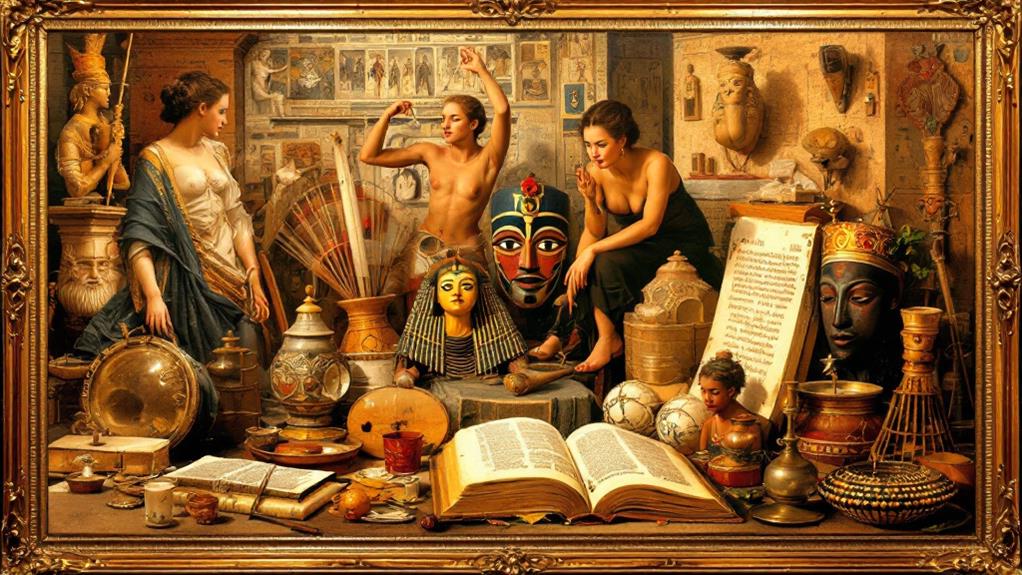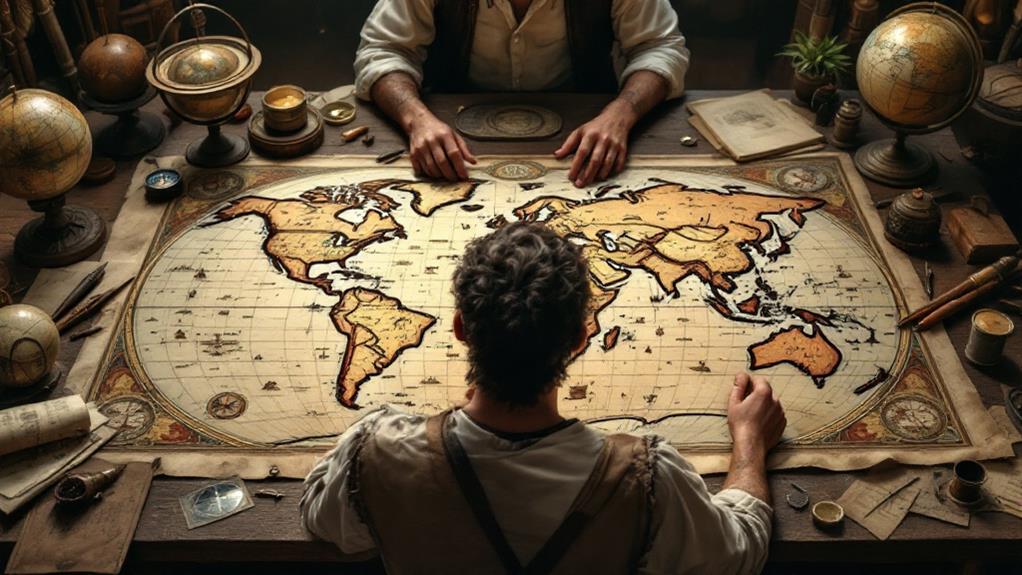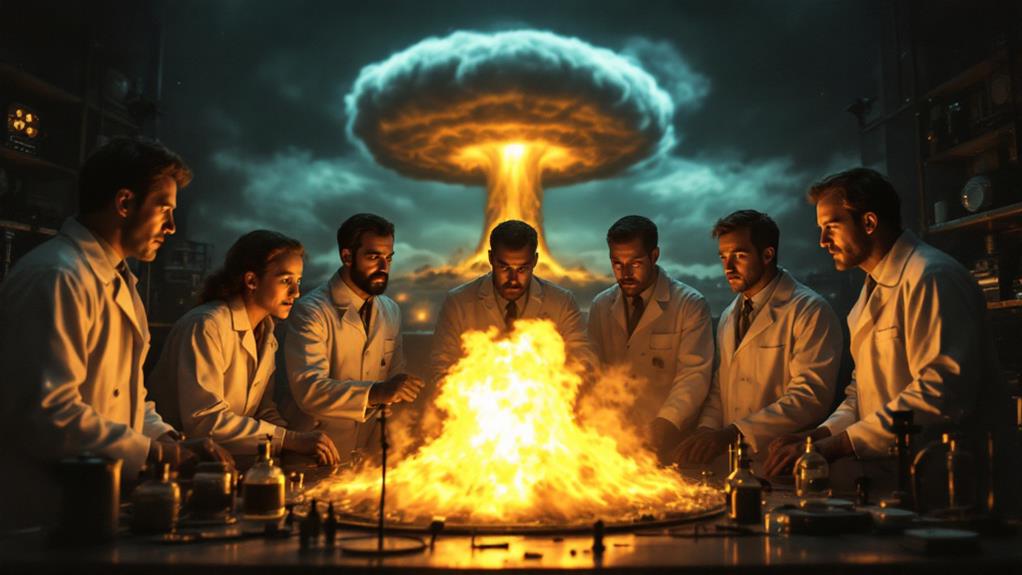The History of Zoology: Studying Animal Life Throughout History
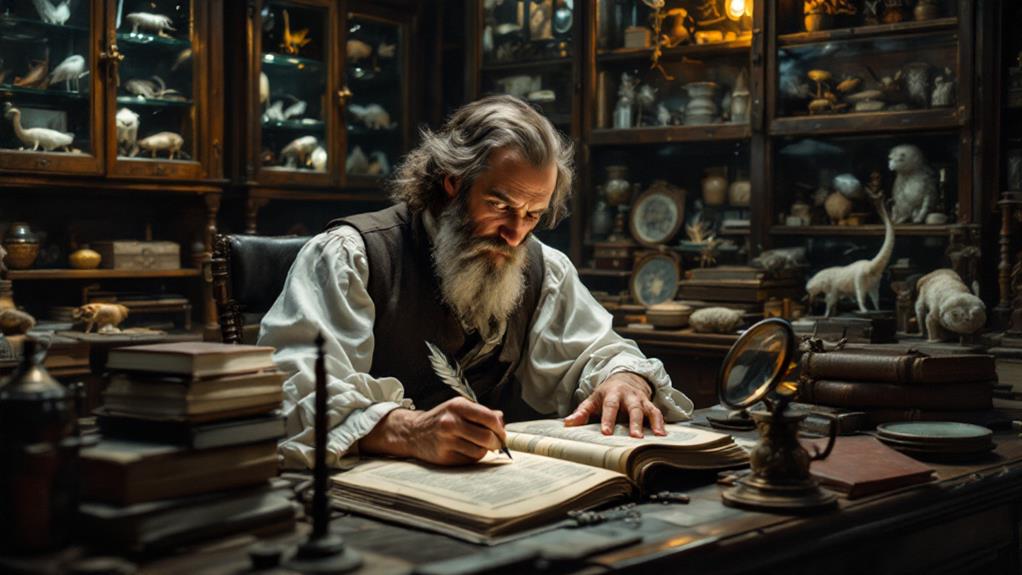
Zoology's history spans millennia, from ancient observations to modern scientific breakthroughs. You'll find that early humans relied on animal knowledge for survival, while ancient civilizations often attributed divine meanings to creatures. The Renaissance brought a shift towards empiricism, with scholars developing classification systems and using new tools like microscopes. Darwin's theory of evolution revolutionized the field, while genetics and molecular biology opened new research avenues. Today, zoology focuses on conservation, ecosystem preservation, and addressing global challenges. As you investigate this captivating expedition, you'll uncover how our understanding of animal life has evolved alongside human knowledge and technology.
Ancient Observations and Beliefs
Observing and interpreting animal behavior has been a part of human culture since prehistoric times. As you investigate ancient zoological understanding, you'll find it deeply intertwined with folklore and mythology. Early humans relied on their observations of animals for survival, developing intricate beliefs about their nature and significance.
Ancient civilizations often attributed divine or symbolic meanings to animals. In Egypt, you'd see gods depicted with animal features, while Greek myths featured creatures like the Minotaur and Hydra. These beliefs shaped early approaches to animal study and classification.
Early classification systems emerged as humans sought to organize their knowledge. Aristotle, often considered the father of zoology, developed one of the first systematic approaches. He categorized animals based on their characteristics and habitat, laying the groundwork for future scientific inquiry.
You'll notice that ancient observations weren't always accurate by modern standards. However, they formed the foundation for zoological study. From cave paintings to early written records, these ancient perspectives provide valuable glimpses into how our ancestors understood and interacted with the animal kingdom.
Renaissance and Scientific Revolution
As the Renaissance dawned, zoology experienced an extraordinary revival alongside other scientific disciplines. You'd witness a shift towards empiricism, as scholars began to rely more on direct observation and experimentation rather than ancient texts. This period saw the emergence of comparative anatomy, with researchers like Andreas Vesalius carefully dissecting and documenting animal structures.
During the Scientific Revolution, you'd find zoology becoming increasingly systematic. Naturalists like John Ray developed classification systems based on observable characteristics, laying the groundwork for modern taxonomy. You'd see the invention of the microscope revolutionizing the field, allowing scientists to study microscopic organisms and cellular structures for the first time.
The work of Francis Bacon promoted the scientific method, encouraging zoologists to form hypotheses and conduct experiments to test them. This approach led to significant advancements in understanding animal physiology and behavior. By the end of this era, you'd recognize zoology as a distinct scientific discipline, with researchers actively challenging long-held beliefs and seeking empirical evidence to support their theories about the animal kingdom.
Taxonomy and Classification Systems
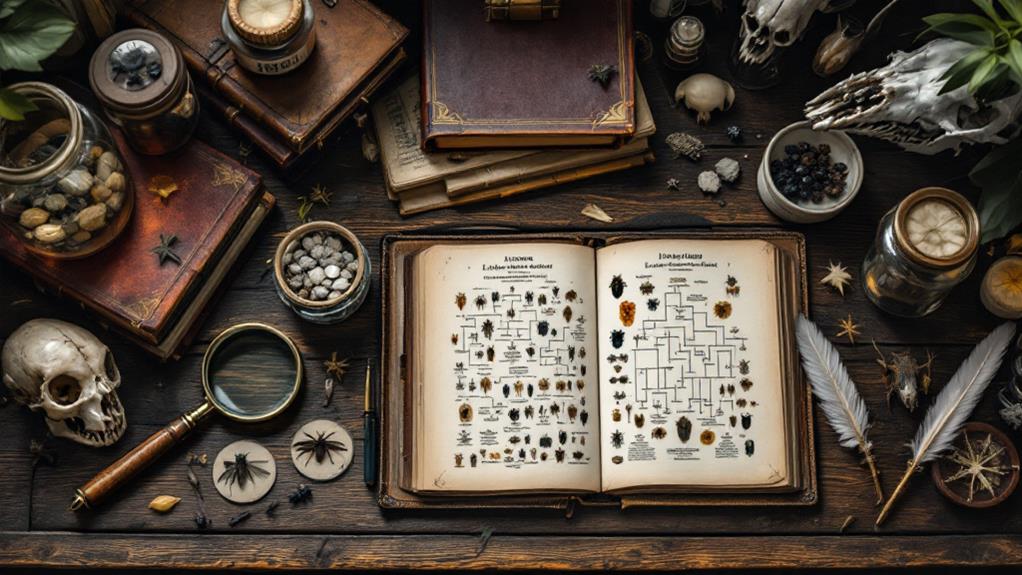
Taxonomy and classification systems often stand as cornerstones of modern zoology. You'll find their roots in the work of Carl Linnaeus, who introduced binomial nomenclature in the 18th century. This system, which assigns each species a two-part Latin name, revolutionized how scientists categorize and discuss organisms.
As you investigate the development of taxonomy, you'll notice how it's intertwined with comparative anatomy. Scientists began examining the physical structures of animals more closely, identifying similarities and differences that inform classification. This approach led to the creation of hierarchical systems, grouping animals into increasingly specific categories from kingdom to species.
The concept of species distribution also played a vital role in shaping classification systems. As naturalists traveled the world, they observed how different animals inhabited specific regions. This knowledge contributed to our understanding of biodiversity and evolutionary relationships between species.
Today, you'll see that modern taxonomy incorporates genetic analysis alongside traditional morphological studies. This integration has led to revisions in classification, providing a more accurate representation of evolutionary history and relationships among animal groups.
Darwin's Theory of Evolution
A scientific revolution shook the foundations of zoology in the mid-19th century with Charles Darwin's theory of evolution. Darwin's groundbreaking work, "On the Origin of Species," introduced the concept of natural selection, explaining how species change over time.
You'll find that Darwin's theory proposed that organisms with advantageous traits are more likely to survive and reproduce, passing these traits to their offspring. This process, known as descent with modification, gradually leads to the evolution of species. Darwin's ideas challenged the prevailing belief in the fixity of species and provided a mechanism for explaining the diversity of life on Earth.
As you plumb Darwin's theory, you'll uncover its profound impact on zoology and biology as a whole. It unified various fields of study, from anatomy to embryology, under a common framework. The theory also sparked intense debate and further research, leading to the development of the modern evolutionary synthesis in the 20th century. Today, evolution remains a cornerstone of biological science, guiding our understanding of animal diversity, adaptation, and the relationships between species.
Genetics and Molecular Biology
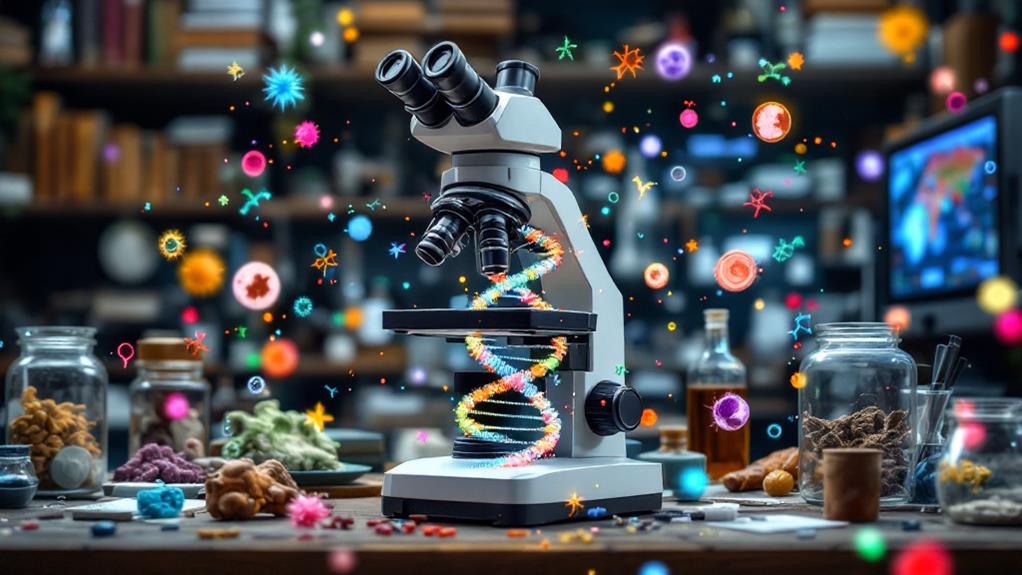
While Darwin's theory revolutionized zoology, the field was about to undergo another significant change with the advent of genetics and molecular biology. You'll find that these disciplines have dramatically altered our understanding of animal life at its most fundamental level.
The discovery of DNA's structure in 1953 by Watson and Crick opened up new avenues for zoological research. Suddenly, you could investigate the genetic basis of animal traits and behaviors. This breakthrough led to the development of genomics research, allowing you to sequence entire animal genomes and compare them across species.
As you immerse yourself deeper into cellular mechanisms, you'll uncover how genes influence an organism's development, physiology, and evolution. Molecular biology techniques like PCR and gene editing have become essential tools in your zoological toolkit. They've enabled you to study endangered species, track animal populations, and even resurrect extinct genes.
Today, you're witnessing the integration of genetics and molecular biology with traditional zoological approaches. This fusion has created new subfields like molecular ecology and conservation genetics, revolutionizing how you study and protect animal life.
Ethology and Animal Behavior
From the microscopic world of genes, zoology's focus expanded to encompass the broader domain of animal behavior through the field of ethology. This scientific discipline, pioneered by Konrad Lorenz and Niko Tinbergen in the mid-20th century, revolutionized our understanding of animal behavior. Ethologists study animals in their natural habitats, observing and analyzing their actions to uncover the underlying mechanisms driving their conduct.
Ethology examines both innate behaviors, which are genetically programmed, and learned behaviors, which animals acquire through experience. You'll find that this field has made remarkable strides in understanding animal cognition, revealing surprising levels of intelligence in various species. From tool use in primates to problem-solving in corvids, ethologists have uncovered noteworthy cognitive abilities across the animal kingdom.
The impact of ethology extends beyond scientific circles, influencing:
- Wildlife conservation efforts
- Animal welfare practices
- Our understanding of human behavior
As you explore deeper into ethology, you'll discover how it bridges the gap between biology and psychology, offering perceptions into the complex interplay between genes, environment, and behavior in shaping animal lives.
Conservation and Environmental Zoology
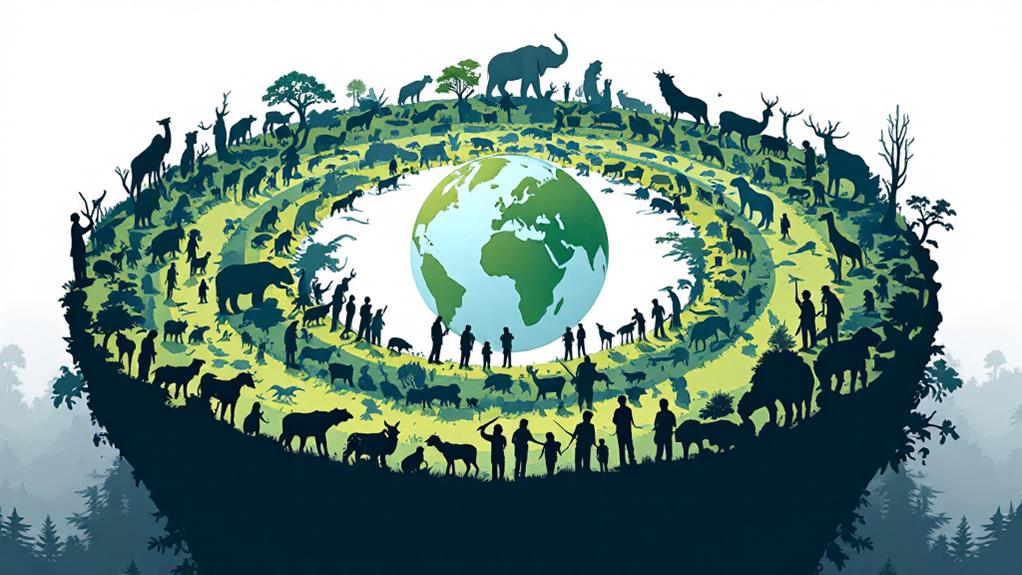
How has zoology's focus shifted in recent decades? You'll find that conservation and environmental zoology have become increasingly prominent. As human activities continue to impact the natural world, zoologists have redirected their efforts towards protecting endangered species and preserving ecosystems.
In this field, you'll see a blend of traditional zoological knowledge with modern ecological principles. Wildlife management has emerged as an indispensable aspect, where scientists work to maintain healthy animal populations while balancing human needs. You'll encounter zoologists developing strategies to mitigate human-wildlife conflicts and restore habitats.
Ecosystem preservation has also gained significance. You'll find zoologists studying entire ecological systems, recognizing that the health of individual species is intrinsically linked to their environment. They're working on projects ranging from reintroducing extinct species to designing protected areas.
Conservation zoologists are now at the forefront of addressing global challenges like climate change, habitat loss, and biodiversity decline. You'll see them collaborating with policymakers, local communities, and other scientists to develop sustainable solutions. Their work is imperative in ensuring the survival of countless species and maintaining the planet's ecological balance for future generations.

